Search Thermo Fisher Scientific
Invitrogen
CCL2 (MCP-1) Monoclonal Antibody (2H5), Biotin, eBioscience™
FIGURE: 1 / 10
CCL2 (MCP-1) Antibody (13-7096-85) in Flow
-Flow-20170216130641.jpg?time=20240507)
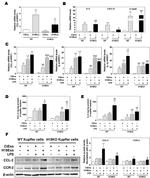
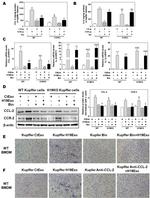
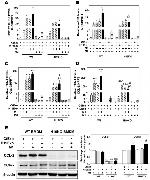
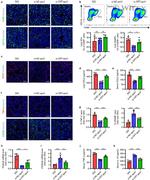
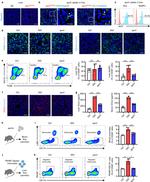
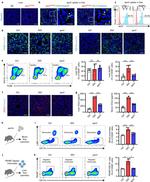
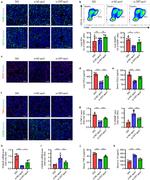
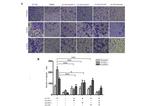
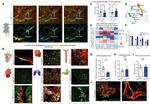
Product Details
13-7096-85
Species Reactivity
Published species
Host/Isotype
Recommended Isotype Control
Class
Type
Clone
Conjugate
Form
Concentration
Purification
Storage buffer
Contains
Storage conditions
Shipping conditions
RRID
Product Specific Information
Description: The 2H5 monoclonal antibody reacts with mouse, rat, and human monocyte chemoattractant protein-1 (MCP-1), also known as CCL2 and MCAF.
Applications Reported: The 2H5 antibody has been reported for use in ELISA, intracellular staining for flow cytometric analysis, and cytokine neutralization. (Please use Functional Grade purified 2H5, Product # 16-7096, in functional assays).
Applications Tested: Mouse MCP-1 ELISA: The biotinylated 2H5 antibody has been tested as the detection antibody in a sandwich ELISA for analysis of mouse MCP-1 in combination with the affinity purified 4E2/MCP (Product # 14-7091-81) antibody for capture and recombinant mouse MCP-1 as the standard. A suitable range of concentrations of this antibody for ELISA detection is 0.5-2.0 µg/mL. A standard curve consisting of doubling dilutions of the recombinant standard over the range of 2000 pg/mL - 15 pg/mL should be included in each ELISA plate.
Human MCP-1 ELISA: The biotinylated 2H5 antibody has been tested as the detection antibody in a sandwich ELISA for analysis of human MCP-1 in combination with the affinity purified 5D3-F7 (Product # 14-7099-81) antibody for capture and recombinant human MCP-1 as the standard. A suitable range of concentrations of this antibody for ELISA detection is 0.5-2.0 µg/mL. A standard curve consisting of doubling dilutions of the recombinant standard over the range of 2000 pg/mL - 15 pg/mL should be included in each ELISA plate.
The Functional Grade purified 2H5 antibody has been tested for neutralization of MCP-1 bioactivity.The fluorochrome-conjugated 2H5 antibody has been tested for intracellular staining and flow cytometric analysis of mouse, rat, and human cells and can be used at less than or equal to 0.5 µg per test. A test is defined as the amount (µg) of antibody that will stain a cell sample in a final volume of 100 µL. Cell number should be determined empirically but can range from 10^5 to 10^8 cells/test. It is recommended that the antibody be carefully titrated for optimal performance in the assay of interest.
Filtration: 0.2 µm post-manufacturing filtered.
Target Information
This gene is one of several cytokine genes clustered on the q-arm of chromosome 17. Cytokines are a family of secreted proteins involved in immunoregulatory and inflammatory processes. The protein encoded by this gene is structurally related to the CXC subfamily of cytokines. Members of this subfamily are characterized by two cysteines separated by a single amino acid. This cytokine displays chemotactic activity for monocytes and basophils but not for neutrophils or eosinophils. It has been implicated in the pathogenesis of diseases characterized by monocytic infiltrates, like psoriasis, rheumatoid arthritis and atherosclerosis. It binds to chemokine receptors CCR2 and CCR4.
For Research Use Only. Not for use in diagnostic procedures. Not for resale without express authorization.
Bioinformatics
Protein Aliases: C-C motif chemokine 2; chemokine (C-C motif) ligand 2; H-MCP-1; HC11; immediate-early serum-responsive JE protein; Immediate-early serum-responsive protein JE; MCAF; MCP-1; MGC9434; Monocyte chemoattractant protein 1; monocyte chemoattractant protein-1; Monocyte chemotactic and activating factor; Monocyte chemotactic protein 1; Monocyte secretory protein JE; Platelet-derived growth factor-inducible protein JE; RP23-350G1.3; small inducible cytokine A2; small inducible cytokine A2 (monocyte chemotactic protein 1, homologous to mouse Sig-je); small inducible cytokine subfamily A (Cys-Cys), member 2; small inducible gene JE; Small-inducible cytokine A2
Gene Aliases: AI323594; CCL2; GDCF-2; HC11; HSMCR30; JE; MCAF; MCP-1; MCP1; SCYA2; Sigje; SMC-CF
UniProt ID: (Human) P13500, (Rat) P14844, (Mouse) P10148
Entrez Gene ID: (Human) 6347, (Rat) 24770, (Mouse) 20296

Performance Guarantee
If an Invitrogen™ antibody doesn't perform as described on our website or datasheet,we'll replace the product at no cost to you, or provide you with a credit for a future purchase.*
Learn more
We're here to help
Get expert recommendations for common problems or connect directly with an on staff expert for technical assistance related to applications, equipment and general product use.
Contact tech support
-Flow-20170216130641.jpg?time=20240507)